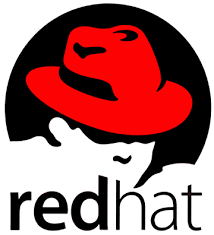 What is open core? Is a project open core, or is a business open core? That's debatable. Like open source, some view it as a development model, others view it as a business model. As a product manager, I view it more in the context of value creation and value capture...With open core, at least some of the code is proprietary. With proprietary code, a company hires engineers, solves business problems, and charges for that software. For the proprietary portion of the code base, there is no community-based engineering, so there's no process by which a community member can profit by participating. With proprietary code, a dollar invested in engineering is a dollar returned in code. Unlike open source, a proprietary development process can't return more value than the engineering team contributes...
What is open core? Is a project open core, or is a business open core? That's debatable. Like open source, some view it as a development model, others view it as a business model. As a product manager, I view it more in the context of value creation and value capture...With open core, at least some of the code is proprietary. With proprietary code, a company hires engineers, solves business problems, and charges for that software. For the proprietary portion of the code base, there is no community-based engineering, so there's no process by which a community member can profit by participating. With proprietary code, a dollar invested in engineering is a dollar returned in code. Unlike open source, a proprietary development process can't return more value than the engineering team contributes...
OpenShift
See the following -
18 Ways To Differentiate Open Source Products From Upstream Suppliers
 Successful open source products must be able to charge a cost that is sufficient to pay for the defrayed upstream open source contributions (development costs) and the downstream productization costs (vendor costs). Stated another way, products can only charge a sufficient price if they create value that can only be captured by customers paying for them. That might sound harsh, but it's a reality for all products. There's a saying in product management: Pray to pay doesn't work. With that said, don't be too worried. There are ethical ways to capture value.
Successful open source products must be able to charge a cost that is sufficient to pay for the defrayed upstream open source contributions (development costs) and the downstream productization costs (vendor costs). Stated another way, products can only charge a sufficient price if they create value that can only be captured by customers paying for them. That might sound harsh, but it's a reality for all products. There's a saying in product management: Pray to pay doesn't work. With that said, don't be too worried. There are ethical ways to capture value.
- Login to post comments
Black Duck Software CEO Tim Yeaton Rejoins Red Hat To Lead Newly-Formed Infrastructure Group
Red Hat, Inc. (NYSE: RHT), the world’s leading provider of open source solutions, today announced that Tim Yeaton, former chief executive officer of Black Duck Software and a onetime Red Hat executive, has rejoined Red Hat in the newly-created position of senior vice president, Infrastructure Group. Read More »
- Login to post comments
Focus On Developers: The 2011 Open Source Rookies
In years past, sifting winners from losers from the previous calendar year was an exercise in intuition, relying entirely on the experience of the individual and their personal recollections of twelve months’ worth of events. Read More »
- Login to post comments
Open Source Power For Small Business In 2014
The biggest impact that open source software offers small business in 2014 takes place in the cloud. Open source software powers the cloud—where you can take advantage of both hosted software and services, and hosted IT infrastructure (e.g., servers). We're already used to hosted services such as Web and mail hosting. They're convenient and cheap, and they prevent headaches. Read More »
- Login to post comments
Opensource.com Publishes 18 Interviews with Speakers of the Upcoming OSCON Conference
For those of you who have not noticed yet, the folks at Opensource.com just completed the publication of an entire series of interviews with speakers at the upcoming O/Reilly OSCON conference. This conference is one of the most important and interesting open source conferences of the year and the wide variety of interviews conducted which show the depth and breadth of the conference topics. `
- The Future Is Open
- Login to post comments
Red Hat Closing In On $2 Billion In Its Fourth Quarter
 Red Hat finishes 2015 on a strong financial note, with OpenShift 3.1 positioned as its next-generation cloud application development platform. Red Hat reported its third quarter 2016 results Nov. 30, and largely contrary to expectations, it's still going strong. Advances in cloud computing, VMware's strong virtualization product line, the Cloud Foundry open source development platform, and Amazon and other cloud computing services were all supposed to be sapping Red Hat's strength. On the contrary, as long as Red Hat remains at the core of the enterprise data center with its Red Hat Enterprise Linux operating system, it will remain a viable competitor to VMware, the open source development platform Cloud Foundry, and proprietary clouds. ..
Red Hat finishes 2015 on a strong financial note, with OpenShift 3.1 positioned as its next-generation cloud application development platform. Red Hat reported its third quarter 2016 results Nov. 30, and largely contrary to expectations, it's still going strong. Advances in cloud computing, VMware's strong virtualization product line, the Cloud Foundry open source development platform, and Amazon and other cloud computing services were all supposed to be sapping Red Hat's strength. On the contrary, as long as Red Hat remains at the core of the enterprise data center with its Red Hat Enterprise Linux operating system, it will remain a viable competitor to VMware, the open source development platform Cloud Foundry, and proprietary clouds. ..
Red Hat Opens OpenShift PaaS Cloud For Business
Leading Linux company Red Hat announced on June 10th that OpenShift Online, its public Platform-as-a-Service (PaaS) cloud offering, is now open for business. Read More »
- Login to post comments
Red Hat's Gunnar Hellekson On Open Government
INTERVIEW Red Hat's Gunnar Hellekson on open government
Read More »
- Login to post comments
Reflecting On 2014, Looking Ahead To 2015
It is confirmed: 2014 has been a great year for Red Hat. Yesterday, we announced third quarter results of our fiscal year 2015 and, with that, celebrated our 51st consecutive quarter of revenue growth - more than 12 years of consecutive revenue growth...
- Login to post comments
What is open core?
- Login to post comments
Why Data Scientists Love Kubernetes
 Let's start with an uncontroversial point: Software developers and system operators love Kubernetes as a way to deploy and manage applications in Linux containers. Linux containers provide the foundation for reproducible builds and deployments, but Kubernetes and its ecosystem provide essential features that make containers great for running real applications...What you may not know is that Kubernetes also provides an unbeatable combination of features for working data scientists. The same features that streamline the software development workflow also support a data science workflow! To see why, let's first see what a data scientist's job looks like...
Let's start with an uncontroversial point: Software developers and system operators love Kubernetes as a way to deploy and manage applications in Linux containers. Linux containers provide the foundation for reproducible builds and deployments, but Kubernetes and its ecosystem provide essential features that make containers great for running real applications...What you may not know is that Kubernetes also provides an unbeatable combination of features for working data scientists. The same features that streamline the software development workflow also support a data science workflow! To see why, let's first see what a data scientist's job looks like...
- Login to post comments
Why Linux is Critical to Edge Computing
 Edge computing is a model of infrastructure design that places many "compute nodes" (a fancy word for a server) geographically closer to people who use them most frequently. It can be part of the open hybrid-cloud model, in which a centralized data center exists to do all the heavy lifting but is bolstered by smaller regional servers to perform high frequency-but usually less demanding-tasks. Because Linux is so important to cloud computing, it's an ideal technology to learn if you intend to manage or maintain modern IT systems.
Edge computing is a model of infrastructure design that places many "compute nodes" (a fancy word for a server) geographically closer to people who use them most frequently. It can be part of the open hybrid-cloud model, in which a centralized data center exists to do all the heavy lifting but is bolstered by smaller regional servers to perform high frequency-but usually less demanding-tasks. Because Linux is so important to cloud computing, it's an ideal technology to learn if you intend to manage or maintain modern IT systems.
- Login to post comments